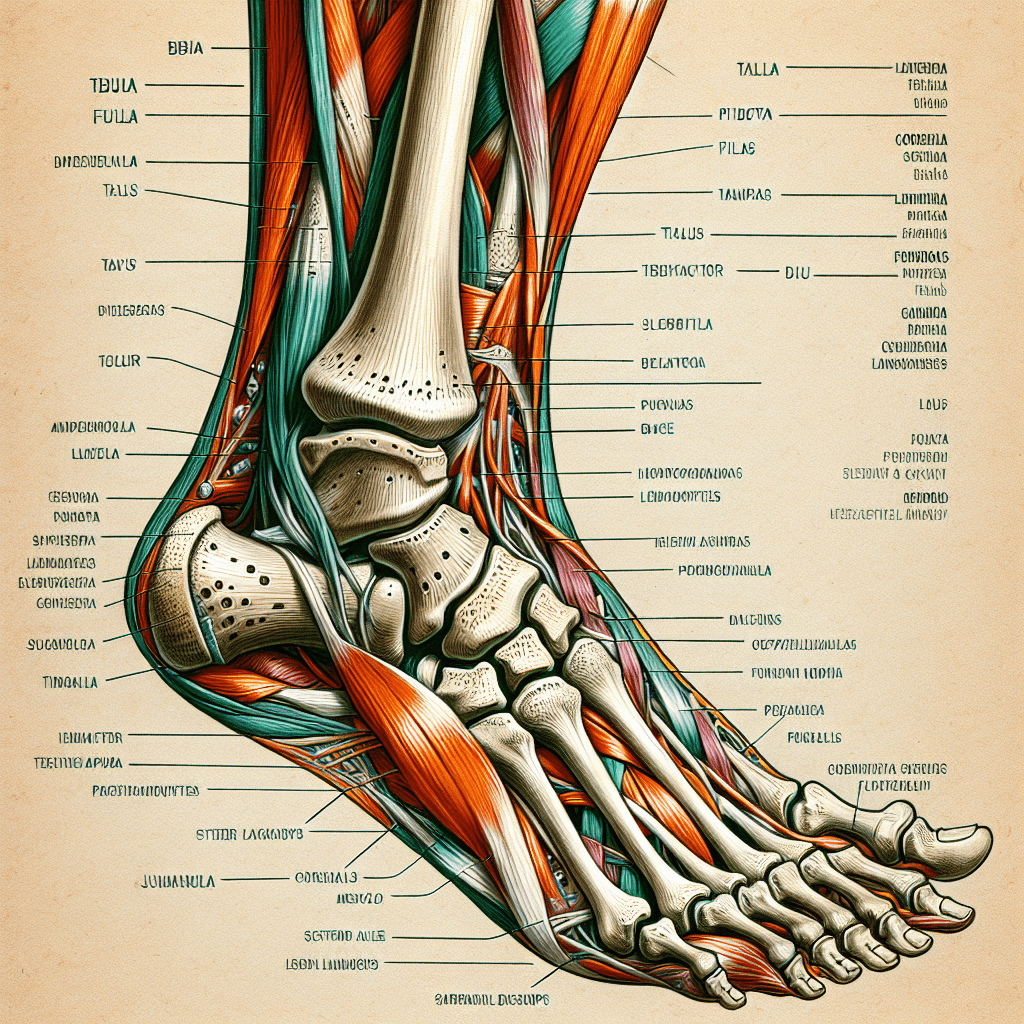Understanding the Signs and Symptoms of Ankle Injuries and Sprains
Ankle injuries and sprains are common musculoskeletal problems that can affect people of all ages and activity levels. These injuries occur when the ligaments that support the ankle are stretched or torn, often due to sudden twisting or rolling of the foot. Recognizing the signs and symptoms of ankle injuries and sprains is crucial for seeking timely medical care and preventing further damage.

Common Symptoms of Ankle Injuries and Sprains
- Pain
- Description: A sharp, intense, or throbbing pain in the ankle, particularly when bearing weight or moving the foot
- Location: May be localized to the site of the injury or can radiate to the foot or lower leg
- Onset: Usually immediate following the injury, but may worsen over the next few hours
- Swelling
- Description: An observable increase in the size of the ankle or surrounding tissue
- Cause: Inflammation and fluid accumulation in response to the ligament damage
- Timing: May develop rapidly after the injury or gradually over several hours
- Tenderness
- Description: Pain or discomfort when touching or applying pressure to the injured area
- Location: Typically most pronounced over the affected ligaments, such as the anterior talofibular ligament (ATFL) or calcaneofibular ligament (CFL)
- Significance: Can help identify the specific ligaments that have been damaged
- Bruising (ecchymosis)
- Description: Discoloration of the skin, often appearing as black, blue, or purple marks
- Cause: Bleeding beneath the skin due to ligament or soft tissue damage
- Timing: May not be immediately apparent, but often develops within 24-48 hours after the injury
- Limited range of motion
- Description: Difficulty or inability to move the ankle through its normal range of motion, such as pointing the toes upward (dorsiflexion) or downward (plantarflexion)
- Cause: Pain, swelling, and muscle guarding in response to the injury
- Impact: Can affect the ability to walk, run, or participate in daily activities
While it may be possible to walk on a sprained ankle, it is generally not recommended, especially in the early stages of the injury. Bearing weight on a sprained ankle can cause further damage to the ligaments, prolong the healing process, and increase the risk of chronic instability. It is important to follow the guidance of a healthcare professional and allow adequate time for rest and recovery before returning to weight-bearing activities. In some cases, assistive devices such as crutches or a walking boot may be necessary to protect the injured ankle while healing.
Grading the Severity of Ankle Sprains
Ankle sprains can be classified into three grades based on the severity of ligament damage and the associated symptoms:
- Grade 1 (mild)
- Description: A slight stretching of the ligaments without significant tearing or laxity
- Symptoms: Mild pain, swelling, and tenderness; minimal loss of function and weight-bearing ability
- Recovery time: Typically 1-2 weeks with conservative treatment
- Grade 2 (moderate)
- Description: A partial tear of the ligaments with some degree of laxity and instability
- Symptoms: Moderate pain, swelling, tenderness, and bruising; difficulty bearing weight and walking
- Recovery time: Usually 3-6 weeks with a combination of rest, immobilization, and rehabilitation
- Grade 3 (severe)
- Description: A complete tear or rupture of the ligaments, resulting in significant instability
- Symptoms: Severe pain, swelling, tenderness, and bruising; inability to bear weight or walk; a popping sensation or sound at the time of injury
- Recovery time: Often 6-12 weeks or longer, may require surgical intervention and extensive rehabilitation
When to Seek Medical Attention
While minor ankle injuries may resolve with self-care measures, it is important to seek medical attention in the following situations:
- Inability to bear weight or walk on the affected foot
- Severe pain, swelling, or bruising that does not improve with rest and self-care
- Visible deformity or asymmetry of the ankle or foot
- Numbness, tingling, or coldness in the foot or toes
- Symptoms that do not improve within a few days or worsen over time
- Recurrent ankle sprains or instability, suggesting underlying chronic conditions
Prompt evaluation and treatment by a healthcare professional can help ensure proper healing, reduce the risk of complications, and prevent future ankle injuries.
| Sign/Symptom | Ankle Fracture | Ankle Sprain |
|---|---|---|
| Pain | Severe, often localized to bone | Mild to severe, often in soft tissue |
| Swelling | Significant, may be delayed | Varies, often immediate |
| Bruising | May be extensive | Usually less severe |
| Deformity | Visible angulation or asymmetry | Rare, may have mild asymmetry |
| Weight-bearing | Often impossible | Difficult, but may be possible |
| Mechanism | High-energy trauma, direct blow | Twisting, rolling, or inverting foot |
There are several steps you can take to reduce your risk of ankle injuries and sprains:
- Maintain good physical condition and muscle strength through regular exercise
- Practice balance and proprioception exercises to improve ankle stability
- Wear proper footwear that provides adequate support and fits well
- Be cautious when walking or running on uneven or slippery surfaces
- Warm up before physical activities and gradually increase the intensity and duration
- Use appropriate protective equipment when participating in sports or high-risk activities
- Allow adequate time for rest and recovery between physical activities or training sessions
Conclusion
Ankle injuries and sprains are common musculoskeletal problems that can cause pain, swelling, and limited function. Recognizing the signs and symptoms of these injuries is essential for seeking timely medical care and preventing further damage. By understanding the grading system for ankle sprains and knowing when to seek professional help, individuals can take steps to ensure proper healing and reduce the risk of future problems. If you suspect that you or a loved one has sustained an ankle injury or sprain, don't hesitate to consult a healthcare provider for an accurate diagnosis and appropriate treatment plan.